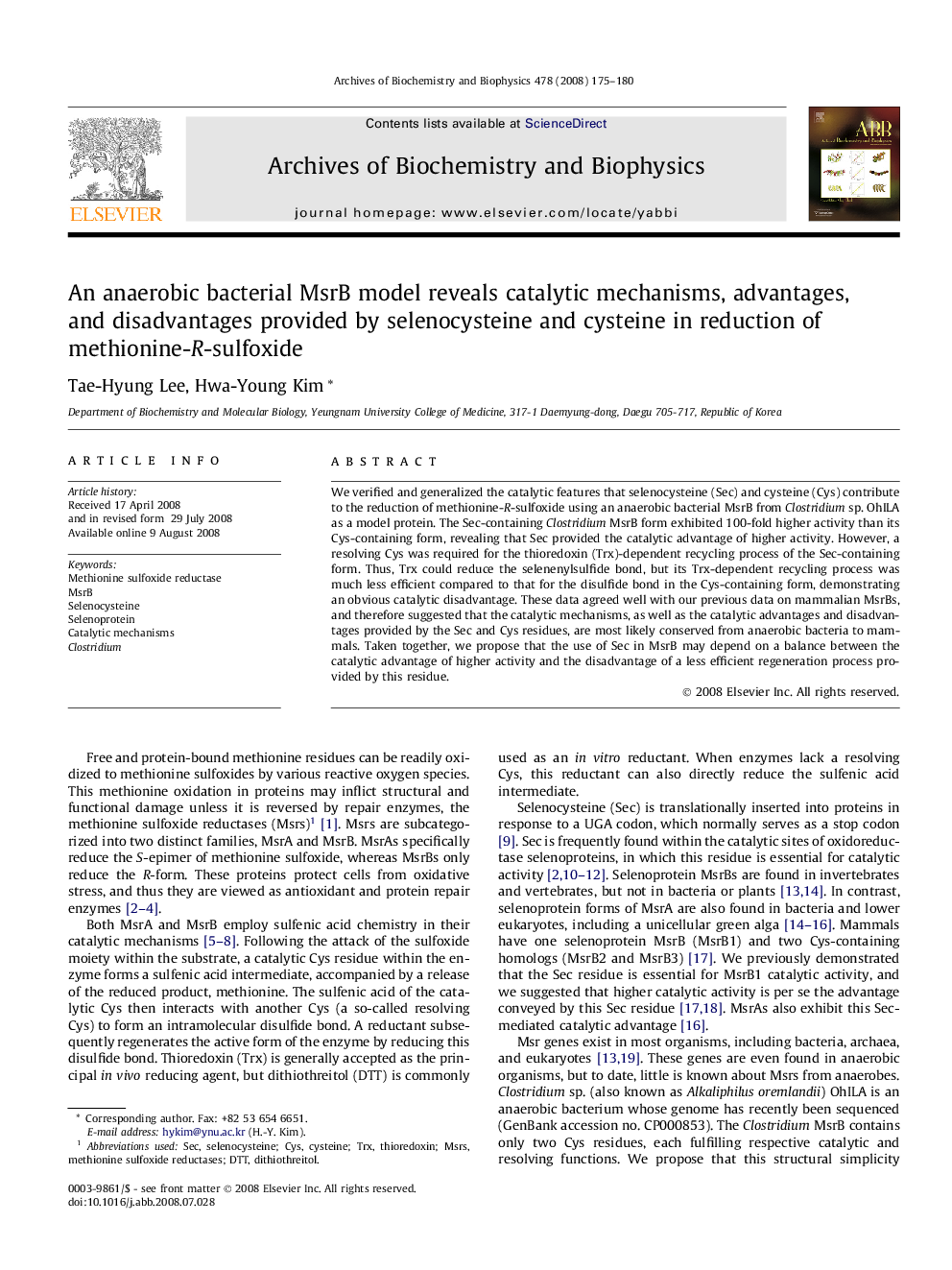| کد مقاله | کد نشریه | سال انتشار | مقاله انگلیسی | نسخه تمام متن |
|---|---|---|---|---|
| 1926568 | 1536469 | 2008 | 6 صفحه PDF | دانلود رایگان |

We verified and generalized the catalytic features that selenocysteine (Sec) and cysteine (Cys) contribute to the reduction of methionine-R-sulfoxide using an anaerobic bacterial MsrB from Clostridium sp. OhILA as a model protein. The Sec-containing Clostridium MsrB form exhibited 100-fold higher activity than its Cys-containing form, revealing that Sec provided the catalytic advantage of higher activity. However, a resolving Cys was required for the thioredoxin (Trx)-dependent recycling process of the Sec-containing form. Thus, Trx could reduce the selenenylsulfide bond, but its Trx-dependent recycling process was much less efficient compared to that for the disulfide bond in the Cys-containing form, demonstrating an obvious catalytic disadvantage. These data agreed well with our previous data on mammalian MsrBs, and therefore suggested that the catalytic mechanisms, as well as the catalytic advantages and disadvantages provided by the Sec and Cys residues, are most likely conserved from anaerobic bacteria to mammals. Taken together, we propose that the use of Sec in MsrB may depend on a balance between the catalytic advantage of higher activity and the disadvantage of a less efficient regeneration process provided by this residue.
Journal: Archives of Biochemistry and Biophysics - Volume 478, Issue 2, 15 October 2008, Pages 175–180